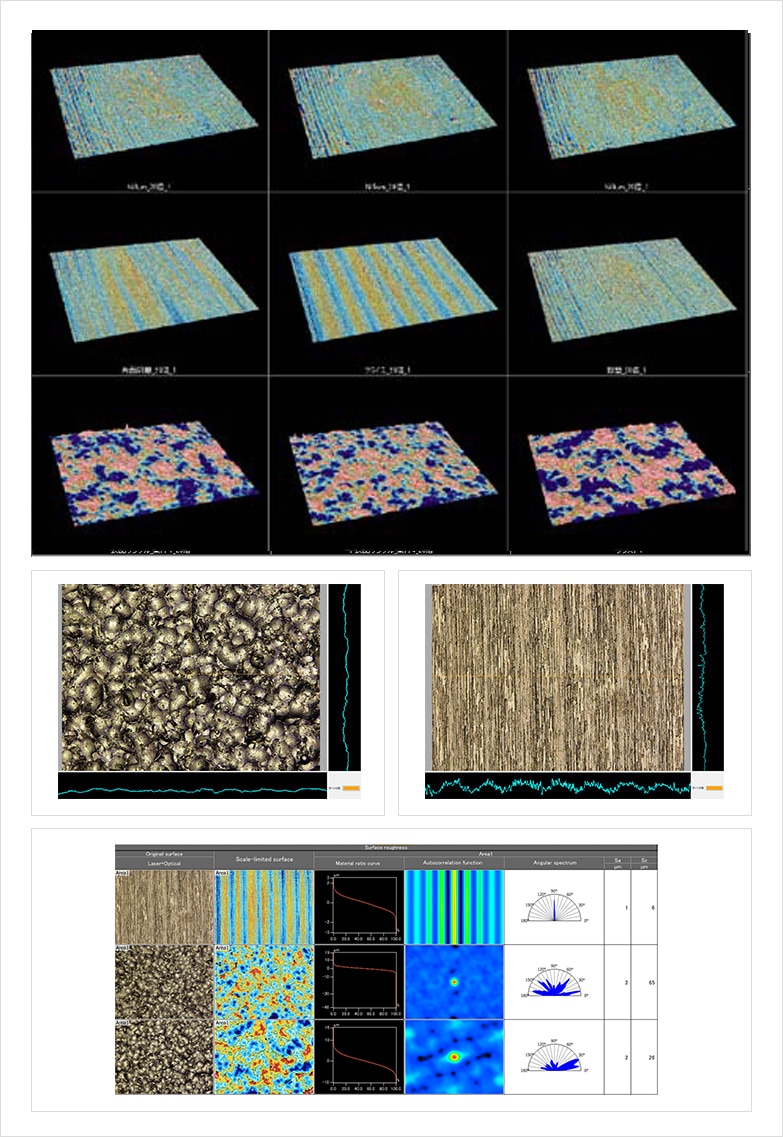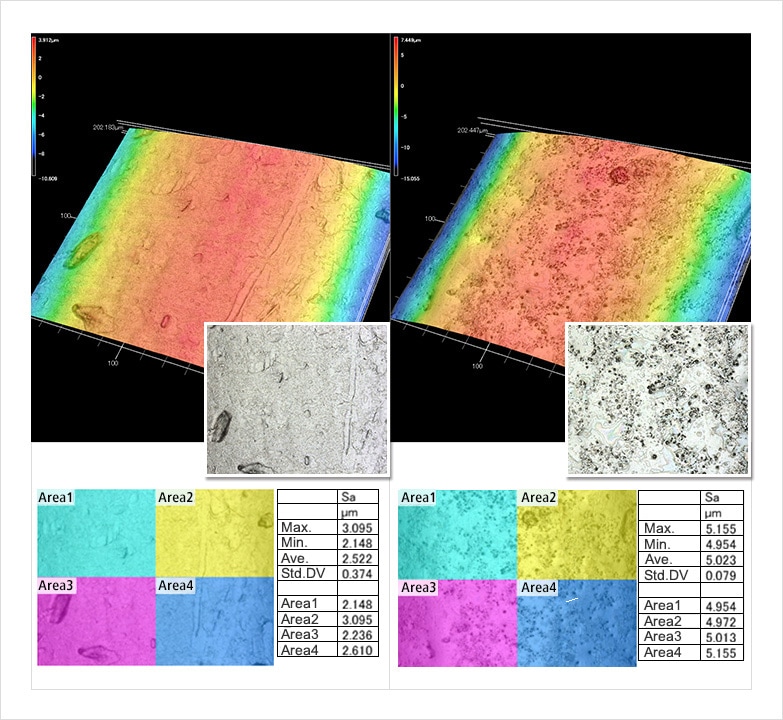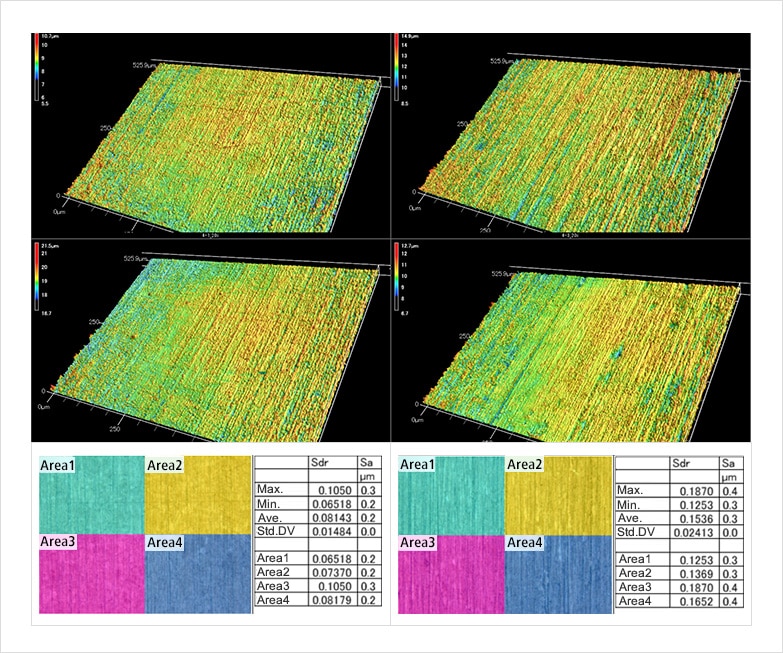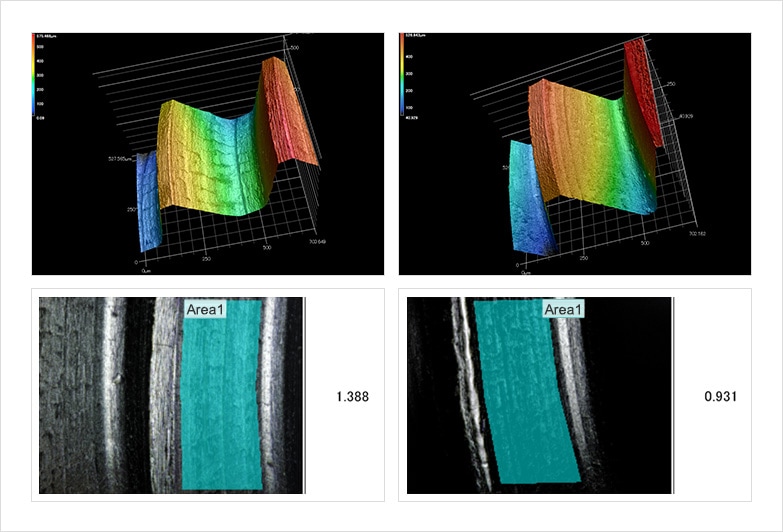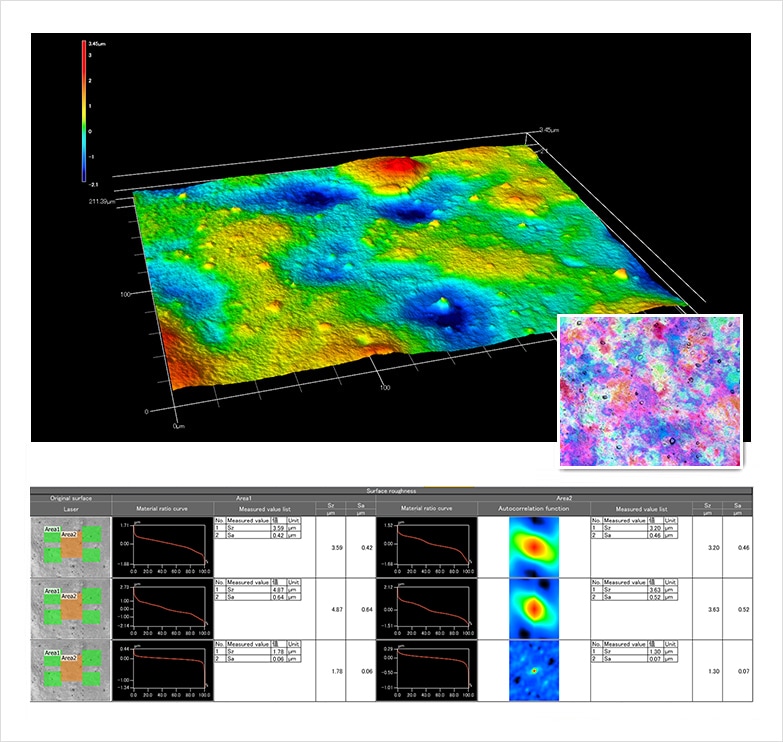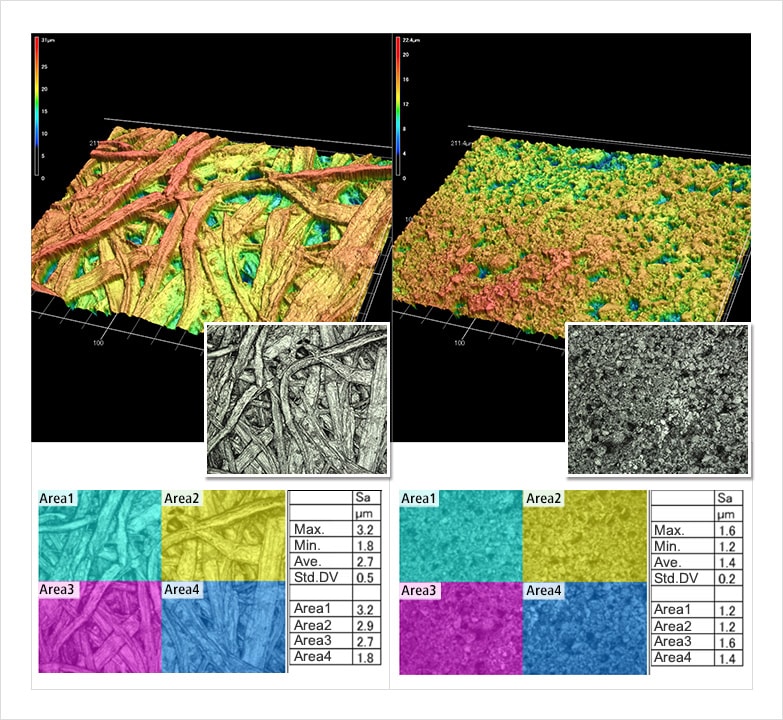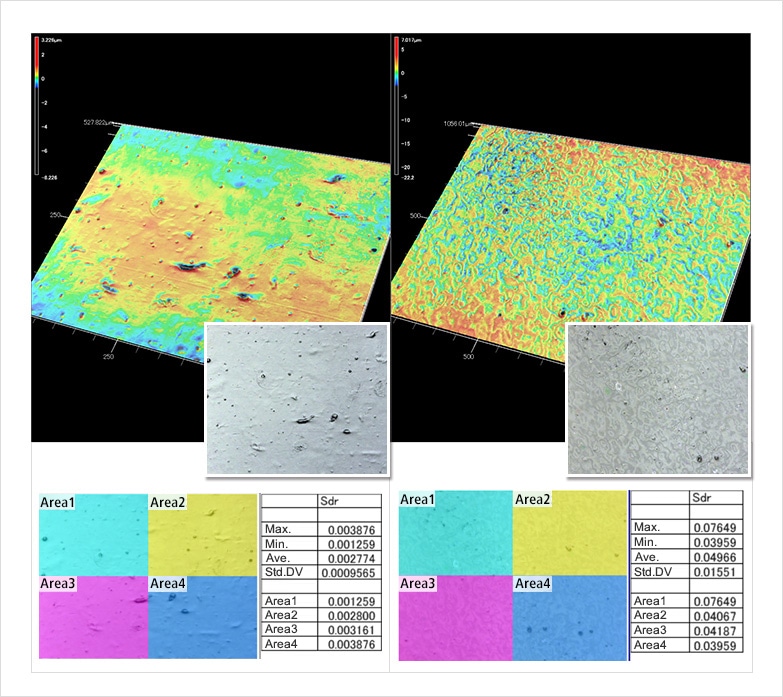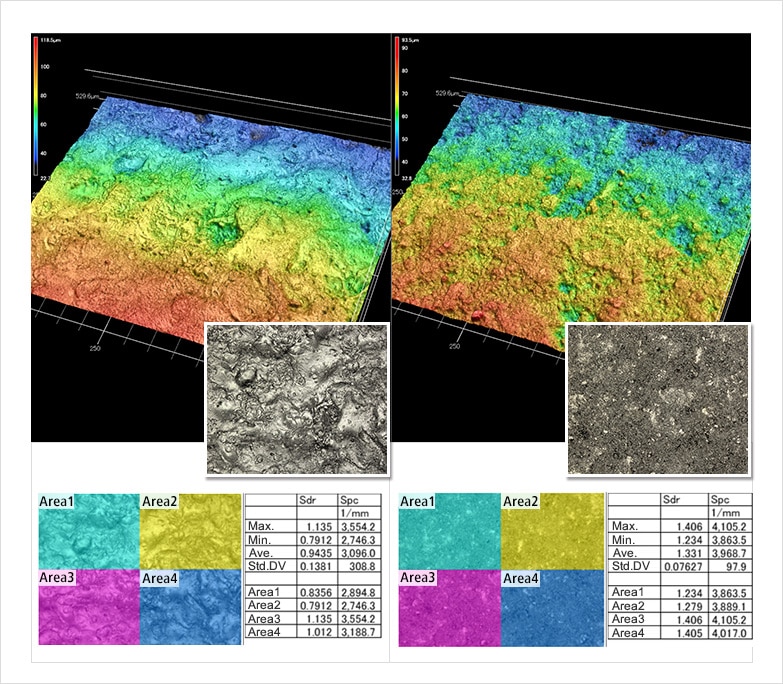Automotive and Metal Industry
Analysis of sliding surface smoothness/protrusion height — Ra (Arithmetic mean roughness) / Rz (Max. height)
Steering components
Ra measurements look at the smoothness of a sliding surface and Rz measurements look at the surface height. Because using Ra alone may cause some points, such as single protrusions, to be overlooked it is important that both Ra and Rz be used together.
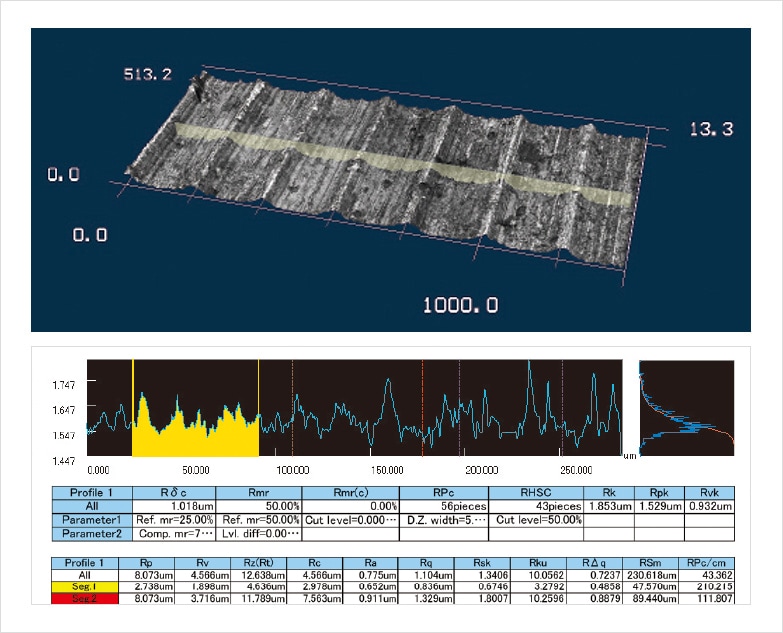
Quantification of grindstone quality by looking at roughness — Ra (Arithmetic mean roughness) / Rz (Max. height)
Metal grindstone
Ra and Rz are used to look at the completed condition of the grindstone by looking at the differences in individual grits. Through management using numerical values, stable quality can be assured.
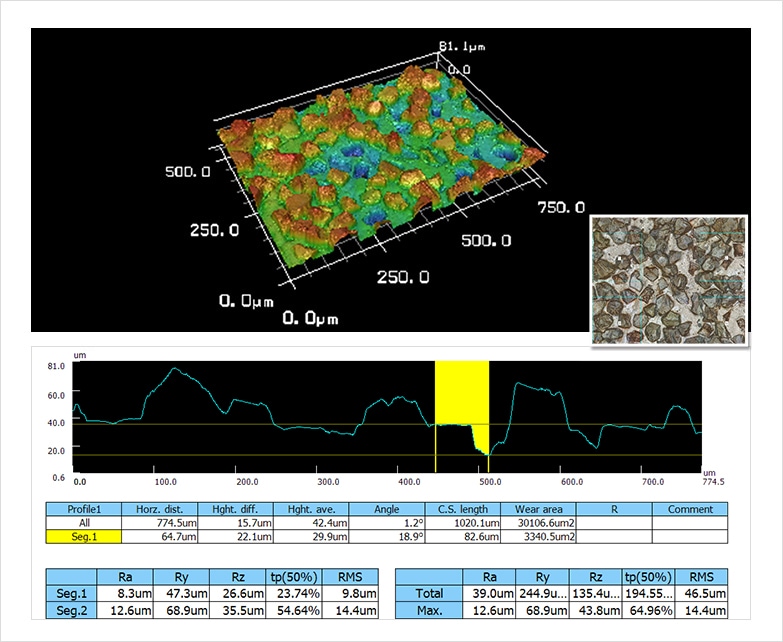
Quantification of differences in metal processing methods — Sa (Arithmetic mean height) / Sz (Max. height) / Str (Texture aspect ratio)
Processed metal surface
This analysis compares changes in surface properties that arise from different processing methods. Sa and Sz analysis looks at the finishing condition, while Str analysis checks whether processing traces can be found in external appearances.
